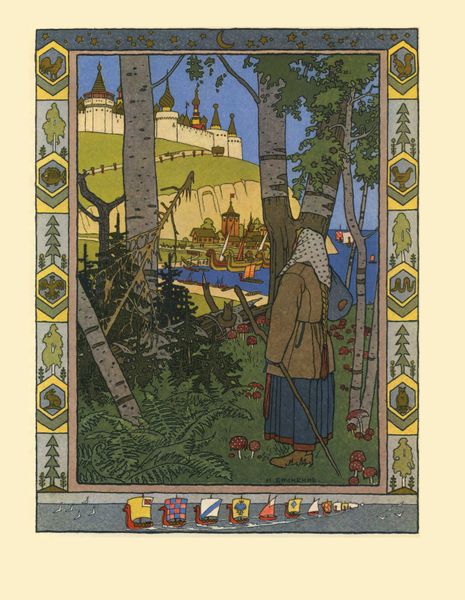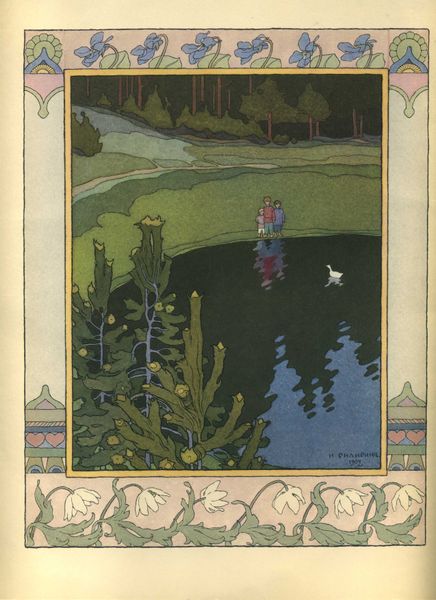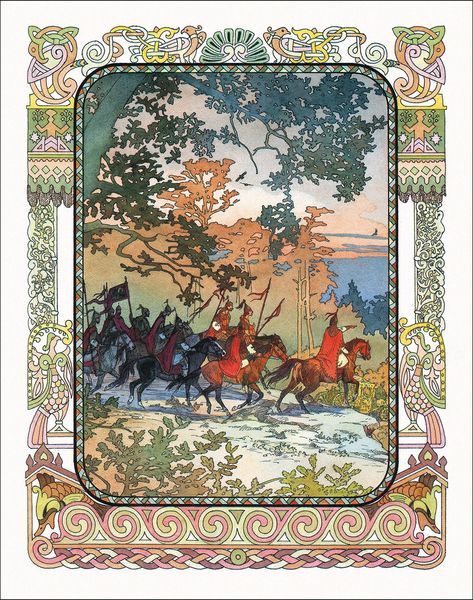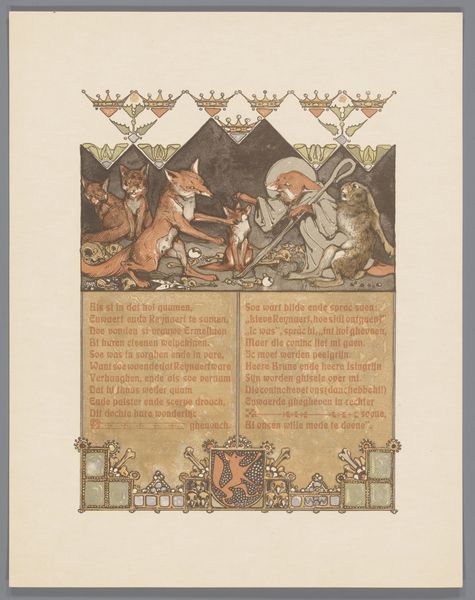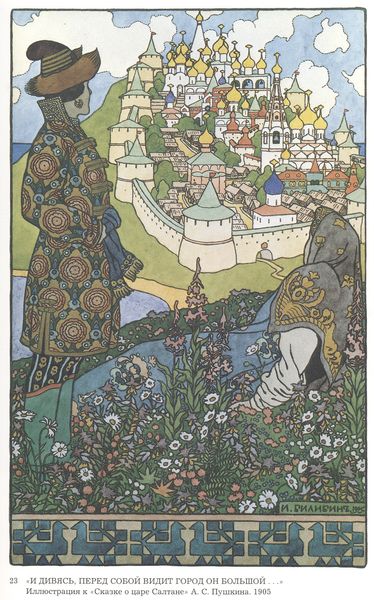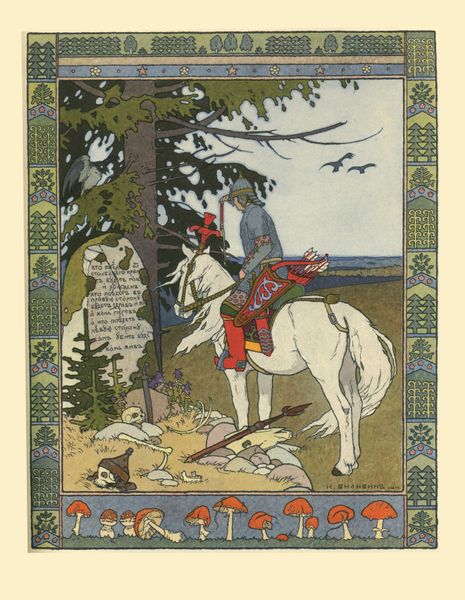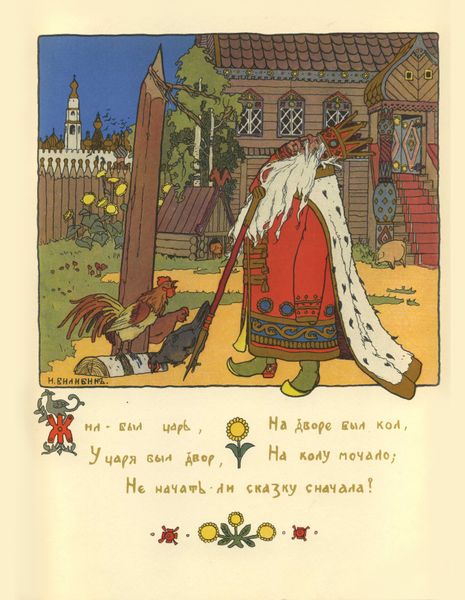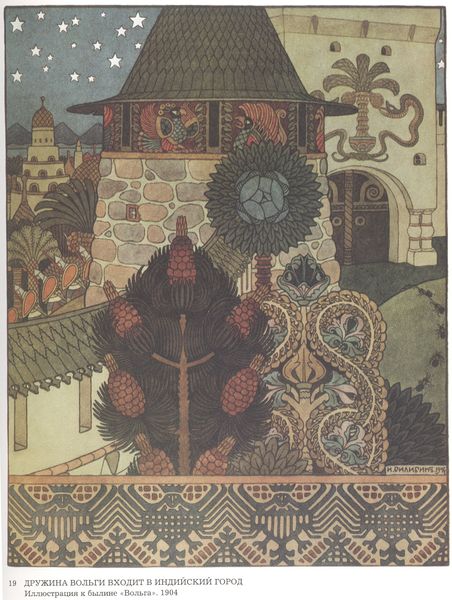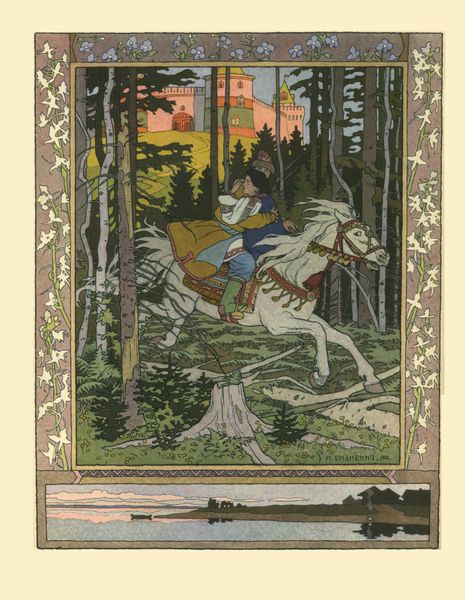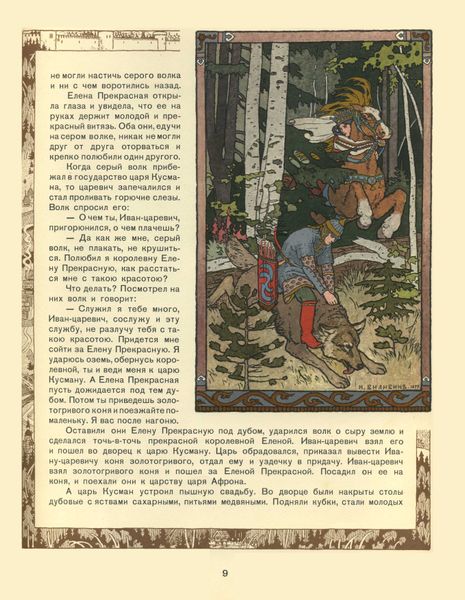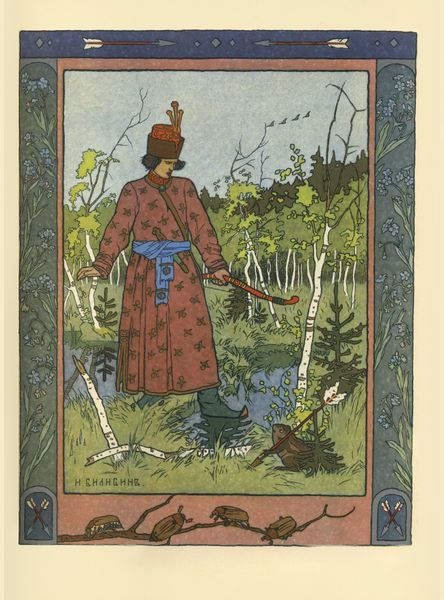
watercolor
#
animal
#
asian-art
#
story telling
#
traditional media
#
landscape
#
text
#
watercolor
#
folk-art
#
mythology
#
symbolism
#
watercolour illustration
Copyright: Public domain
Curator: This is Ivan Bilibin’s “Illustration for the Russian Fairy Story 'White Duck',” created in 1902. It’s a watercolour illustration, part of a larger project illustrating Russian folk tales. Editor: What strikes me immediately is its graphic quality, the almost block-printed feel, even though it's watercolour. The colours are rich, but the composition is almost flattened, and there's so much detail. Curator: Yes, Bilibin was deeply influenced by the Arts and Crafts movement, evident in his meticulous attention to detail. His technique, perfected after studying law and then art, often involved drawing fine lines with a pen before applying watercolour washes. Consider also his deep interest in *lubok* traditions in the service of the Imperial Court—in what ways can an illustration to a fairy tale, designed by a St. Petersburg intellectual, act in the service of the Court's interests? Editor: The integration of text is interesting. It's not just a picture; it’s an element that serves the story itself. And look at how the borders visually contextualize and frame the story--in this example ducks waddling along. He creates a total work of art by framing this entire page in decorative vegetal motifs. Curator: Precisely. Bilibin consciously aimed to recreate a sense of old Russia, often drawing on peasant art, embroidery, and architecture. His stylized landscape here becomes a theatrical backdrop to convey folk stories, playing up the sense of nostalgia within a rapidly changing industrial society. Editor: I notice how the story of the swan seems to permeate the piece as the borders create a mise-en-scène for what looks to be a mournful princess standing by the body of water as she stares at a solitary swan in the lake. Curator: Exactly. Beyond just depicting a scene, he offers us access to understand his vision of Russian identity at a specific cultural and political turning point. Editor: Bilibin shows us how the cultural power of fairy tales reflects the era from which they originate. Curator: And his meticulous process of creation gives value to these tales that are intended for all to have.
Comments
No comments
Be the first to comment and join the conversation on the ultimate creative platform.
